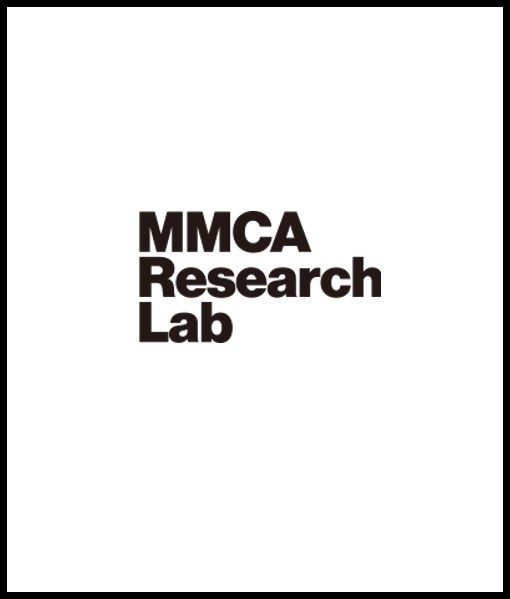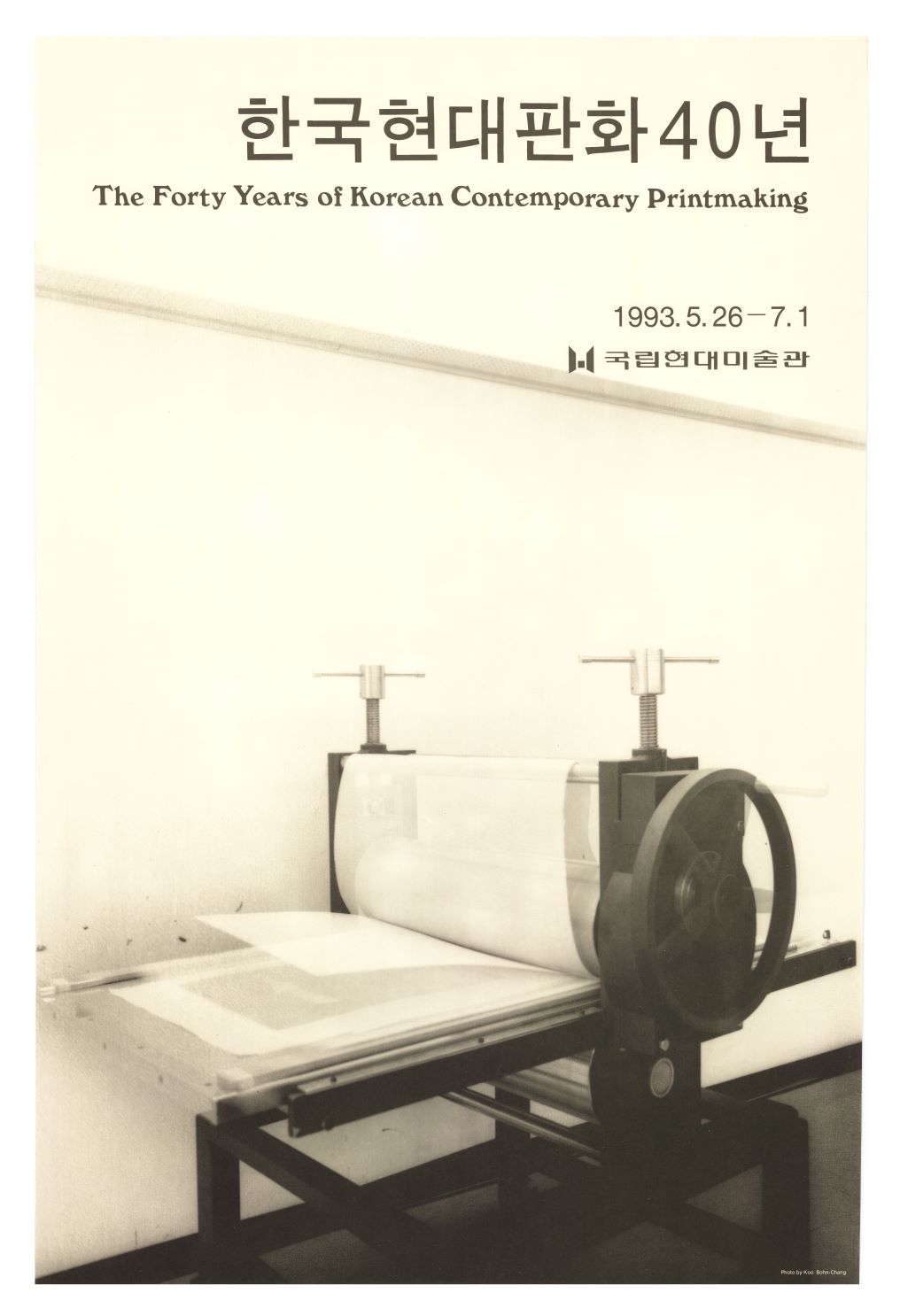
Lee Gu-yeol
* Source: MMCA
Related
-

Korean Art Critics Association
Korean Art Critics Association is an organization founded by art critics in 1956. The founding members include; Choi Sunu, Lee Hangsung, Lee Kyungsung, Chung Kyu, Bang Geun-taek, Bae Gilgi, Chun Seung-bok, Kim Byungki, Kim Youngki, Kim Chung-up, and Kim Youngjoo. Lee Yil, a subsequent president of the group, established the quarterly art magazine Korean Journal of Art Criticism in 1986, and created the Korean Art Critics Association Award in 2009. Through this platform, the association continues to support artists and art writers.
-

A feast of Eastern paintings
Exhibition of Ten Eastern Painters was an invitational exhibition of ten mid-career Eastern-style painters held under the theme of “a feast of Eastern paintings” by the Seoul Shinmun newspaper company from April 14 through 20, 1978 at the Seoul Press Center in Seoul. It is also known as Ten Master Eastern-style Painters. The invited artists were Kim Kichang, Kim Okjin, Kim Hwakyung, Suh Seok, Sung Jaehyu, Ahn Dongsook, Lee Yootae, Chang Woosoung, Cho Joonghyun, and Heo Geon. Twenty works were displayed. In 1971, the Seoul Shinmun had already organized an exhibition of six ink painters, who were Kim Eunho, No Soohyeon, Park Seungmoo, Byeon Gwansik, Lee Sangbeom, and Huh Baeklyun, under the title of the Exhibition of Six Eastern-style Painters. The six artists invited to this exhibition were those who were still alive at the time after participating in the Landscape Paintings by Ten Masters exhibition hosted by Oh Bongbin of the Joseon Art Museum and curated by the art journalist Lee Gu-yeol. They were representatives of Korean modern and contemporary Eastern-style painters, and their works were traded at the highest prices in the Korean art market in the 1970s. Seven years later, the Seoul Shinmun newspaper company selected “ten mid-career artists of the Eastern painting circle who carried on the legacy of great masters of the time while recalling the brilliant achievements of 1971” and held Ten Master Eastern Painters in 1978. In order to raise interest in the exhibition, a series of articles to introduce the invited artists was published under the title of “Painting Studio of New Spring: In Search of the Participating Artists of the Exhibition Ten Master Eastern Painters” from March 17 through April 13, 1978, about a month before the exhibition was held. The Seoul Shinmun also declared that it would annually conduct cultural projects in the future. In 1979, it introduced young Eastern-style painters in their 30s and 40s in the Twelve Eastern Painters exhibition. In the 1970s, Eastern paintings were overwhelmingly popular in the Korean art market, compared to other genres. Various exhibitions on Eastern paintings were held regardless of the size of the exhibition space, including Five Eastern Painters (1977, Sun Gallery), Invitational Exhibition of Thirty Eastern Painters (1977, Dongsanbang Gallery), Fourteen Eastern Painters, Five Eastern Painters (Johyeong Gallery), and Five Eastern Painters (Chungwang Gallery). Among such exhibitions, the Exhibition of Ten Eastern Painters organized by the Seoul Shinmun newspaper company attracted more attention because it was held under the auspices of the Ministry of Culture and Public Information.
-

Lee Kyungsung
Lee Kyungsung (1919-2009, pen name Seoknam) was born in Incheon as the first son of Lee Hak-soon and Jin Bo-bae. He graduated from Changyeong Elementary School (1926-31) and Gyeongseong Commercial School (1934-36). In 1937, he moved to Japan and graduated from the Department of Law at Waseda University in 1941. After his return to Korea, he worked as a clerk at the Gyeongseong Court. Later, he returned to Japan to study art history at Weseda University. After independence, he was appointed as the first director of the Incheon City Museum, a director of Hongik University Museum, Walker Hill Art Center (1981-83), and the MMCA (1981-83, 1986-92). He strived to improve the structure of Korean art museums and also trained professional curators. During his appointment as a professor at Ewha Womans University (1957-60) and Hongik University (1961-81), he also served as a chair of the Korean Art Critics Association and published several important books that contributed to the foundation of a modern Korean art history. He established the Seoknam Art Culture Foundation in 1989 and the Seoknam awards for art and art theory. After his retirement, he focused on his art and held numerous solo exhibitions.
Find More
-

Korean Art Today’s Method
Korean Art: Today’s Method was an inaugural exhibition held by the Korea Culture and Arts Foundation (now Art Council Korea, ARKO for short) in 1979 in commemoration of the opening of its art center on the former site of Seoul National University in Dongsung-dong. A committee consisting of painters, sculptors, and critics, including Park Raegyeong, Park Seo-Bo, Seo Seok, Lee Gu-yeol, Lee Yil, and Chung Kwanmo, organized the exhibition, which was divided into two installments with a selection of artists to explore the methods of Korean art. For the first exhibition (May 21–June 10), forty-four painters with abstract tendencies were invited, and for the second exhibition (December 4–23), fifty-two Western-style figurative painters, twenty-five Eastern-style painters, and twenty-one sculptors were invited. The participating artists for the first exhibition were Kwon Youngwoo, Kwon Okyon, Kim Kulim, Kim Seonhui, Kim Yong-ik, Kim Jong-gun, Kim Jinsuk, Kim Hongseuk, Nam Kwan, Yu Gyeongjae, Park Seo-Bo, Park Jangyeon, Byeon Joha, Seo Seok, Suh Seungwon, Ahn Dongsook, Ahn Sangchul, Woo Jaegil, Youn Myeungro, Yun Hyongkeun, Lee Kangso, Lee Kyungsoo, Lee Dongyou, Lee Dooshik, Lee Bann, Lee Bongreal, Lee Seduk, Lee Seungjio, Lee Taehyun, Lee Hyangmi, Jeon Hyeonghwa, Chung Keonmo, Chung Munkyu, Jeong Yeongyeol, Chung Changsup, Cho Yongik, Chin Ohcsun, Choi Daesup, Choi Myoungyoung, Choi Byungso, Pyo Seunghyun, Ha Indoo, Ha Chonghyun, and Hwang Yongyop. These artists were categorized not in terms of genre, but in terms of visual methodologies: tearing, drawing, applying, smearing, painting, spilling, sliding, burning, and others. On the other hand, the second exhibition featured ninety-eight Western-style painters, Eastern-style painters, and sculptors, who practiced a predominantly figurative style of expression. They included Min Kyoungkap, Chun Kyungja, Pak Nosoo, Song Soonam, Kim Hyung-geun, Lee Daiwon, Lee Manik, Yim Jiksoon, Choi Youngrim, Jeun Loijin, Oh Jong-uk, and Youn Young-ja, among others.
-

The Forty Years of Korean Contemporary Printmaking
The Forty Years of Korean Contemporary Printmaking was a print exhibition held by the National Museum of Contemporary Art, Korea (now MMCA) from May 26 through July 1, 1993. The exhibition was designed to explore the history and current status of contemporary Korean prints with an organizing committee consisting of Lee Gu-yeol, Youn Myeungro, Kim Hyungdae, Oh Kwang-su, Ha Dongchul, and Kim Taeho. It was organized by era, and 143 works by ninety-seven artists from each era were displayed. There were eight works from the 1950s by Kim Choungza, Park Sookeun, Yoo Kangyul, and others; nineteen works from the 1960s by Kang Whansup, Kim Minja, Kim Bongtae, and others; forty-one works from the 1970s by Kang Kukjin, Kwak Duckjun, Kim Kulim, and others; forty-five works from the 1980s by Kang Sangjung, Kang Airan, Kim Sangku, and others; and thirty works from the 1990s by Kang Seunghee, Koo Jahyun, Kim Seungyeon, and others. The exhibition verified the changes and growth in contemporary Korean prints responding to the trends that reflected the diversification and complexification of printmaking techniques and the enlargement of prints. In addition to the exhibition, the MMCA conducted research on the history of Korean printmaking and the reality of the print circles at the time in commemoration of the exhibition. The exhibition catalogue contains the essays “The History of Korean Print Art” by Lee Gu-yeol and “The Formation and Development of Contemporary Korean Prints” by Youn Myeungro, a list of the basic materials for establishing the history of Korean printmaking, and the chronology of Korean print history. In the pertinent symposium, Shin Jangsik presented on “Traditional Korean Prints,” Yoon Dongchun, “The Development and Prospects of Contemporary Korean Prints,” You Hongjune, “The Outcomes and Meanings of the Woodblock Print Movement in the 1980s,” and Hwang Yongjin, “Print Workshops and the Distribution of Prints.” This exhibition is significant in that it was the first attempt made by the MMCA to establish the history of Korean prints and it proclaimed prints as an important genre of contemporary art.






